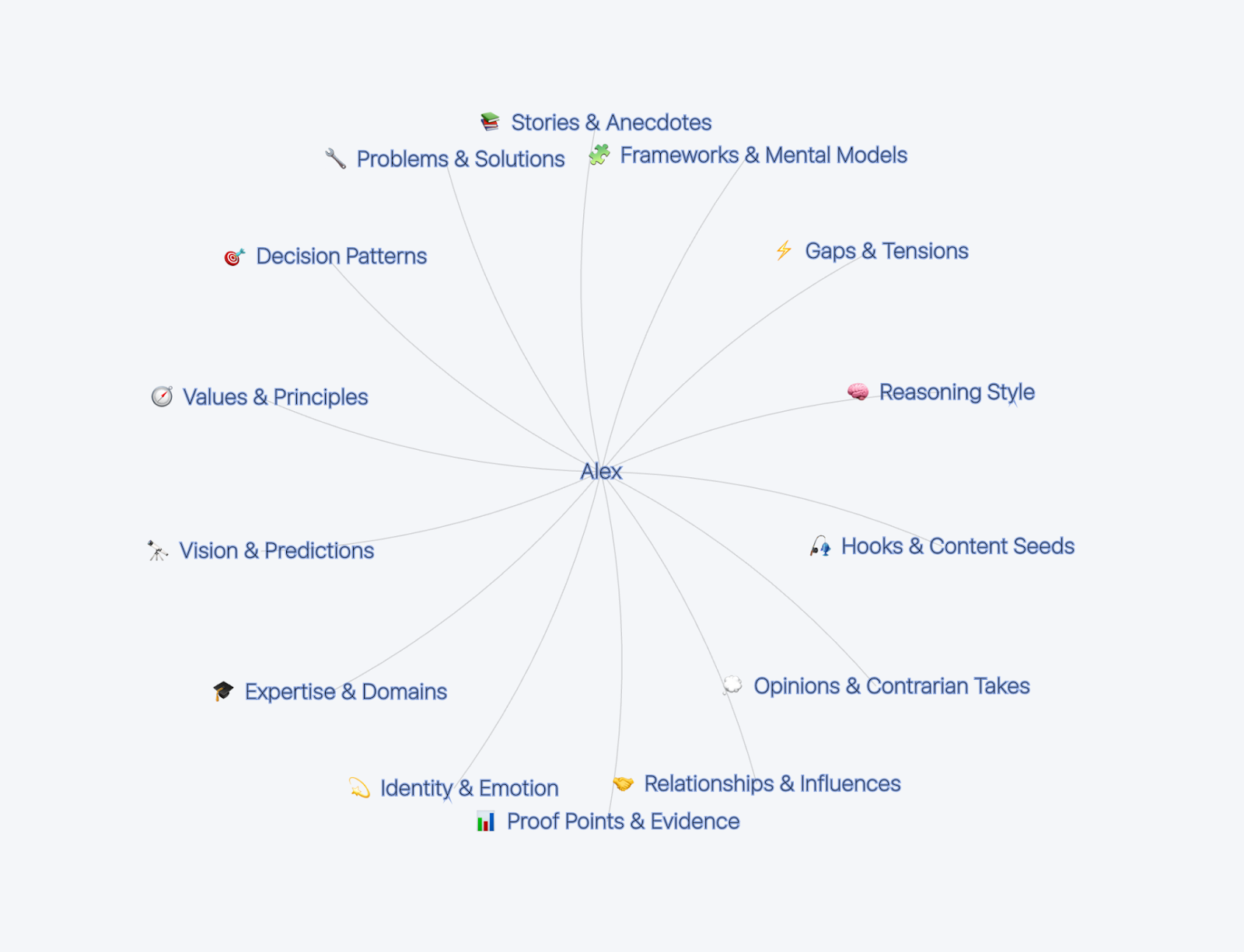Copyright International Business Times

In a San Francisco office where AI companies compete to prove their tools write like humans, the founders of Pressmaster.ai are making a contrarian bet. They don't want their AI to capture your voice. They want to capture how you think. The distinction sounds semantic until you understand what they're building. While competitors feed algorithms samples of your writing to mimic style patterns (sentence cadence, word choice, tonal markers), Pressmaster.ai's technology maps something far more complex: the mental frameworks shaping how you process information, connect ideas, and form perspectives. "The entire industry is optimizing for the wrong thing," says Raoul Plickat, co-founder of Pressmaster.ai. "Brand voice has become shorthand for surface-level mimicry. But what makes thought leadership valuable isn't how someone sounds. It's how they think." This philosophy underpins Pressmaster.ai, a platform recognized as an Inc. Power Partner that has grown to 2,000 users within a few months. The platform claims to reduce content production time by 90% while maintaining the authenticity separating compelling thought leadership from generic business content. For founders and executives drowning in the demands of consistent content creation, the promise is seductive. The question is whether the technology delivers. Why "Brand Voice" Misses the Mark To understand Pressmaster.ai's approach, it helps to understand what they're rejecting. Most AI content tools treat voice as a collection of measurable stylistic choices. Feed them enough writing samples, and they learn to mimic patterns: sentence length distributions, word frequency profiles, tonal markers. The result sounds like you the way a skilled impersonator sounds like a celebrity. Technically accurate but missing something essential. "When you optimize for voice matching, you get content passing a surface-level test," explains Alex Petrisor, co-founder. "The sentences flow. The vocabulary fits. But the authentic reasoning and original insight making thought leadership valuable? Missing." The problem becomes apparent when you examine AI-generated thought leadership flooding platforms like LinkedIn. The content exhibits all the right stylistic markers but feels hollow. Form without substance. Style without the underlying architecture of genuine thought. Pressmaster.ai's alternative focuses on something more fundamental: capturing the cognitive patterns determining how someone approaches problems. How they connect ideas. Which frameworks they apply to new situations. The questions they ask before forming conclusions. Not what they say, but how they think. This distinction matters for founders, executives, and thought leaders who need content doing more than filling space on LinkedIn. They need content building trust, demonstrating expertise, and converting readers into clients or collaborators. The Agentic Twin: Beyond Voice Mimicry At the core of Pressmaster.ai sits what the founders call an "Agentic Twin," a hypergraph structure learning and evolving with each interaction. Think of this as a digital extension of yourself. Instead of copying your writing style, this twin internalizes your mental models. The technology maps relationships between concepts the way you naturally connect them. It identifies the frameworks you apply to problems. It learns which analogies resonate with your thinking and which ideas you consistently return to across different contexts. This creates something different from traditional AI writing assistants. Where conventional tools generate content based on prompts and style guides, the Agentic Twin functions as a thought partner. Words sounding like you, yes. But more than words, ideas aligning with your established patterns of reasoning. The twin evolves continuously. Each piece of content you create, every edit you make, every concept you introduce feeds back into the hypergraph. The twin becomes more accurate over time, not through additional training data, but through deeper understanding of your specific cognitive patterns. The 90% Time Reduction Claim Pressmaster.ai claims their platform reduces content production time by up to 90%. This number demands scrutiny. Most productivity claims in the AI space involve trade-offs: speed at the expense of quality, efficiency at the cost of authenticity. Plickat positions their efficiency gains differently. "The time savings come from eliminating the wrong kind of work," he explains. "The mechanical translation of ideas into formatted content, the repetitive explanation of established concepts, the tedious process of maintaining consistency across multiple pieces." What remains is the valuable work: developing new insights, refining arguments, making strategic decisions about positioning and messaging. The platform handles the production layer while you focus on the thinking layer. You're not spending hours writing. You're spending minutes directing an AI understanding your perspective. For founders and executives who need consistent content output but lack time for extensive writing sessions, this division of labor changes the economics of thought leadership. Content creation shifts from a major time investment to a manageable ongoing practice. AI Content for LinkedIn For Founders: First-Person Authenticity at Scale The platform specializes in first-person content for professional contexts, particularly channels like LinkedIn and X. This focus reveals an understanding of how trust operates in digital spaces. Third-person corporate content creates distance. First-person perspective builds connection. Readers engage differently when they feel they're hearing directly from the person behind the ideas. The challenge has always been maintaining the authentic first-person voice at scale. Most founders write one compelling LinkedIn post. Writing three per week for months requires either significant time investment or delegation often diluting authenticity. Pressmaster.aipositions itself as the solution to this scaling problem. The Agentic Twin maintains first-person authenticity because the twin isn't translating your ideas into generic business language. The twin is expressing them using the mental models and reasoning patterns you've established. The content feels personal because the thinking behind the words is genuinely yours. Pressmaster.ai doesn't create thoughts. The platform articulates the thoughts you have, using the frameworks you apply, in the voice representing how you communicate. Trust, Conversion, and Growth Through Content The founders emphasize three outcomes: trust, conversion, and growth. These outcomes depend on content demonstrating genuine expertise and original thinking. Generic thought leadership fails because readers sense the lack of authentic insight. They've seen the same frameworks recycled across dozens of posts. They recognize when someone is optimizing for engagement rather than sharing valuable perspective. Pressmaster.ai's approach addresses this problem by maintaining the connection between content and the actual expertise of the person it represents. Trust builds when readers consistently encounter original insights expressed through a coherent worldview. They begin to understand what you think and how you think. This deeper familiarity creates the foundation for professional relationships. Conversion happens when content demonstrates capabilities readers need. Thought leadership works as marketing when the content showcases the quality of thinking you bring to client problems. The Agentic Twin maintains this showcase by ensuring content reflects your problem-solving approaches. Growth emerges from consistent presence. Regular content keeps you visible to your network and positions you for opportunities. The platform's efficiency makes this consistency achievable without consuming your schedule. The Specialization Strategy Pressmaster.ai deliberately targets a specific user: founders, thought leaders, and teams creating professional content. This specialization matters. General-purpose AI writing tools serve everyone and optimize for nothing in particular. They generate adequate content for any use case but excel at none. By focusing on thought leadership and first-person professional content, Pressmaster.ai optimizes for the specific challenges this content type presents. No need to handle marketing copy, technical documentation, or creative fiction. Pressmaster.ai dedicates capabilities to one thing: helping experts share their expertise authentically. This narrow focus also shapes the Agentic Twin's learning process. No need to understand how you write fiction or how you explain technical concepts to engineers. The twin needs to understand how you think about your domain and how you communicate those thoughts to professional audiences. The Deeper Question About AI and Authenticity Pressmaster.ai's positioning raises a fundamental question about AI-assisted content creation: Can AI-generated content be authentic? The conventional answer treats AI as a tool for efficiency that inevitably trades authenticity for speed. This view assumes authentic content must emerge directly from human effort, that the process of writing is inseparable from the authenticity of the result. Petrisor challenges this assumption. "Authenticity comes from the thinking, not the typing," he argues. "If an AI system genuinely understands your mental models and reasoning patterns, content generated by the twin is authentic to your perspective even though you didn't personally write every word." This reframes AI's role in content creation. The technology isn't replacing human thought. Pressmaster.ai is eliminating the mechanical translation of thought into formatted text. You still provide the insights, frameworks, and perspectives. The AI handles the articulation. Whether this distinction holds up depends on how well the Agentic Twin captures individual thinking patterns. Surface-level mimicry produces inauthentic content regardless of framing. True understanding of mental models enables authentic expression at scale. The Continuous Evolution Model One of Pressmaster.ai's key differentiators is the continuous evolution of the Agentic Twin. Traditional AI writing tools remain static between updates. You train them once on your style, then use the resulting model until you decide to retrain. This creates a gap between your current thinking and the AI's understanding of your perspective. The hypergraph structure updates with every interaction. As your thinking evolves, as you develop new frameworks or shift your perspective on key issues, the Agentic Twin adapts. The twin captures who you were when you set things up. More importantly, the twin tracks who you're becoming. This continuous learning addresses a critical weakness in AI-assisted thought leadership. Your perspective shouldn't be frozen in time. The whole point of thought leadership is evolving understanding and fresh insights. An AI capturing your thinking from six months ago produces content feeling outdated because the content is outdated. The Agentic Twin maintains relevance by maintaining currency with your current thinking. Market Timing and AI Content Fatigue Pressmaster.ai enters a market experiencing AI content fatigue. Readers have learned to recognize generic AI-generated posts. The telltale signs appear everywhere: certain phrases, predictable structures, the distinctive flavor of content optimized for algorithms rather than humans. This fatigue creates both challenge and opportunity. The challenge is overcoming skepticism about any AI-assisted content tool. The opportunity is providing an alternative addressing the specific problems causing the fatigue. Generic AI content fails because the writing lacks genuine insight and authentic perspective. These posts optimize for surface-level engagement metrics rather than meaningful value. Readers reject them not because AI created them, but because they don't offer anything worth reading. Pressmaster.ai's focus on mental models and authentic thinking positions the platform as a solution to these problems rather than another contributor. If the platform delivers on the promise of maintaining originality and genuine insight, founders get help cutting through the noise of generic content rather than adding to the noise. The Professional Content Ecosystem The platform exists within a larger ecosystem of professional content and personal branding. LinkedIn has evolved into the primary platform for B2B thought leadership. Consistent presence matters. Regular content keeps you visible to your network and positions you as an active participant in professional conversations. This creates pressure for founders and executives who understand the value of content but lack time for consistent creation. They recognize sporadic posts don't build momentum. They know their competitors are showing up regularly with valuable content. Pressmaster.aiaddresses this pressure by making consistency achievable. The 90% time reduction claim matters most in this context. If you can maintain a regular content schedule without sacrificing your actual work, you can compete in the attention economy without it consuming your schedule. The platform also fits into content workflows extending beyond individual posts. Many founders need to maintain blogs, newsletters, speaking proposals, and social media presence simultaneously. An Agentic Twin understanding your thinking supports all these formats while maintaining consistency in perspective and insight. What This Means for Content Creation Pressmaster.ai represents a specific bet about the future of professional content. Plickat and Petrisor believe AI will move beyond mimicry toward genuine understanding of individual thinking patterns. "The valuable work in content creation is developing insights, not formatting them," says Plickat. "Authenticity comes from thinking, not from the mechanical process of writing." If they're right, content creation becomes a different kind of activity. You focus on developing your ideas and perspectives. The AI handles the translation of those ideas into formatted content across multiple platforms. This shift changes the economics of thought leadership. The barrier to consistent content output drops dramatically. Founders who previously couldn't justify the time investment maintain regular presence without sacrificing their core work. The technology also changes what's possible in terms of content volume and variety. An Agentic Twin understanding your thinking generates multiple pieces exploring different angles on the same core insight. You develop one framework, and the twin helps you articulate the framework across various contexts and formats. Whether this vision materializes depends on execution. The gap between promising technology and practical value is where most tools fail. Pressmaster.ai's success will depend on whether the Agentic Twin captures mental models accurately enough to produce content feeling authentically personal to the people the twin represents. The founders have positioned their platform as a challenge to conventional wisdom about AI and authenticity. The market will determine whether that challenge holds up under real-world use.



